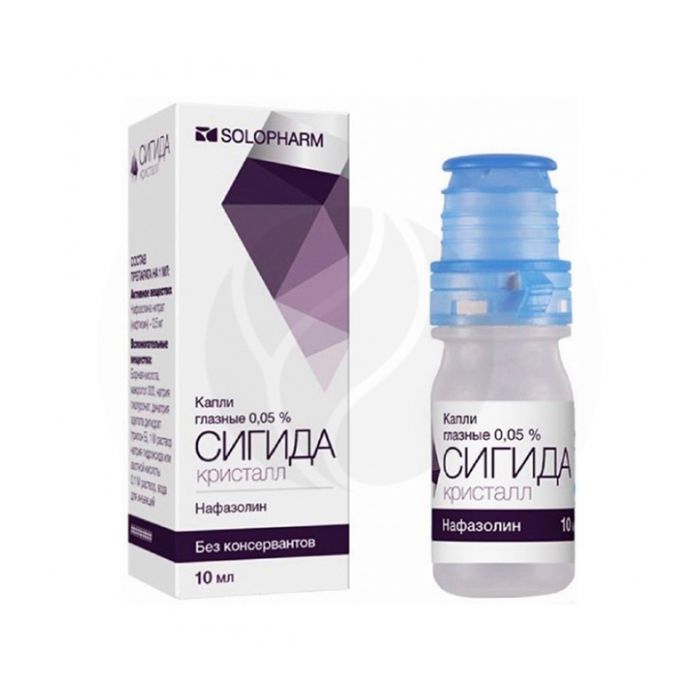Sigida Crystal eye drops 0.05%, 10ml
Expiration Date: 05/2027
Russian Pharmacy name:
Сигида Кристалл капли глазные 0,05%, 10мл
Locally, in the conjunctival sac. Adults and children over 6 years old: 1-2 drops into the conjunctival sac of the eye 2-3 times a day. Children from 2 to 6 years old: 1 drop 1-2 times a day. The drug should not be used for more than 3-5 days.
How to work with a bottle complete with a drop dispenser:
1. Remove the safety ring before using the bottle for the first time.
2. Carefully remove the cap from the bottle. Without touching the dispenser, turn the bottle upside down with the dispenser, fixing it between the thumb and forefinger. Before starting use, it is recommended to pump the dispenser until the first drop of the drug appears by several presses with the index finger on top of the bottle.
3. Tilt your head back, position the bottle dispenser over the eye and pull the lower eyelid down with the index finger of one hand. Press lightly on the bottle and drop the required amount of solution into the conjunctival sac of the eye. Avoid contact of the tip of an open bottle with the surface of the eye and hands.
4. After use, put the cap on the bottle. After opening the bottle, the drug can be used throughout the shelf life. After this period, the drug should be destroyed. In case of visible damage to the vial, the drug should not be used.
Eye drops in the form of a transparent, colorless or slightly yellowish liquid.
1 ml
naphazoline nitrate 0.5 mg
Excipients: boric acid - 18.7 mg, macrogol 300 - 1.125 mg, sodium hyaluronate - 1 mg, disodium edetate dihydrate (Trilon B) - 0.5 mg, 1M sodium hydroxide solution or 0.1M nitric acid solution - up to pH 4.0-7.0, water d / i - up to 1 ml.
- Hypersensitivity to the components of the drug.
- Angle-closure glaucoma.
- Children under 2 years old.
Carefully
Severe cardiovascular diseases (coronary heart disease, arterial hypertension), pheochromocytoma, prostatic hyperplasia, hyperthyroidism, diabetes mellitus, porphyria, dry rhinitis, keratoconjunctivitis dry, glaucoma, combined use with monoamine oxidase inhibitors or other drugs that can increase blood pressure.
pharmachologic effect
Alpha adrenergic agonist. When applied to mucous membranes, it has a rapid, pronounced and prolonged vasoconstrictor effect.
Side effect
Local reactions: irritation of the mucous membrane (depending on the place of application); when used for more than 1 week - edema of the mucous membrane, atrophic rhinitis. From the side of the cardiovascular system: reactive hyperemia, tachycardia, increased blood pressure. From the side of the central nervous system: headache. From the digestive system: nausea.
Application during pregnancy and lactation
The use of naphazoline during pregnancy and lactation (breastfeeding) is possible only on strict indications in cases where the expected therapeutic effect for the mother outweighs the potential risk of side effects in the fetus or child.
Application in children
Contraindicated in children under 1 year of age.
special instructions
Naphazoline can have a resorptive effect. With prolonged use, the severity of the vasoconstrictor action gradually decreases (the phenomenon of tachyphylaxis), and therefore it is recommended to take a break for several days after 5-7 days of use.
Drug interactions
Do not use concomitantly with MAO inhibitors or within 14 days after the end of their use. Naphazoline slows down the absorption of local anesthetics (lengthens their effect during surface anesthesia).

